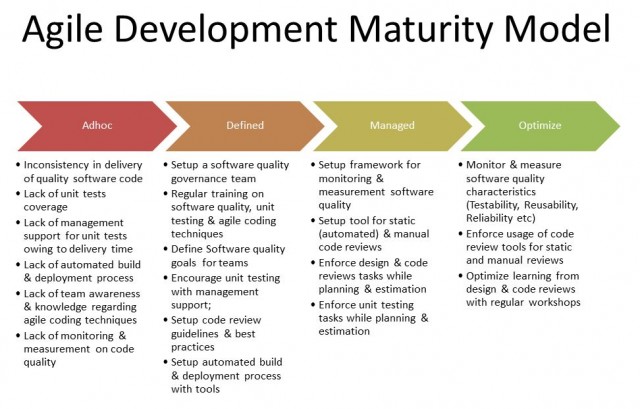The first step when an organization decides to adopt agile development methodology is to look out for a Agile coach who can train the team on agile development processes. For example, an organization either want to adopt extreme programming practices or SCRUM development practices; Once decided, agile coach take team through the specifics of the development processes. For instance, if one wants to go with SCRUM, one would be made aware of some of the following concepts/stages:
- Sprint Planning/Backlogs
- Estimation/Velocity
- Implementation
- Reterospectives
- Burn down charts
Well, once the teams get aware of the above procedures as part of agile development process, they get down to adopting the process. However, in my experience, I have found that it takes quite a long time and patience for the organization to have successful adoption until they also make themselves aware of maturity model and plan accordingly to effectively and efficiently work through above stages while adhering to Agile manifestos of delivering working software frequently while welcoming changing requirements.
Following is the agile development maturity model that can be followed to successfully adopt the agile development methodology:
Above diagram represents following four stages based on which one can plan to setup development practices, and tools & frameworks to achieve the agile development objectives:
- Adhoc
- Defined
- Managed
- Optimized
- Coefficient of Variation in Regression Modelling: Example - November 9, 2025
- Chunking Strategies for RAG with Examples - November 2, 2025
- RAG Pipeline: 6 Steps for Creating Naive RAG App - November 1, 2025

I found it very helpful. However the differences are not too understandable for me